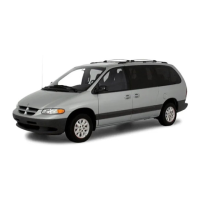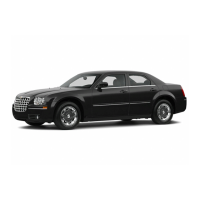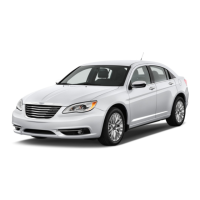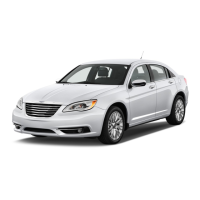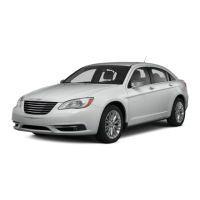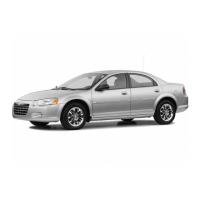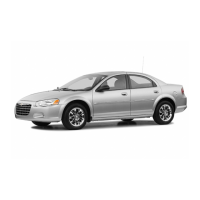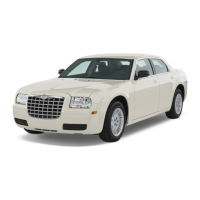other (green in color) coolants. If this occurs, a reduc-
tion in the extended service interval will result. Refer
to LUBRICATION AND MAINTENANCE for service
schedules.
WARNING: DO NOT OPEN COOLING SYSTEM
WHEN HOT AND UNDER PRESSURE BECAUSE
PERSONAL INJURY AND SERIOUS BURNS FROM
COOLANT CAN OCCUR. ALLOW ENGINE TO COOL
BEFORE SERVICING COOLING SYSTEM.
(1) Try squeezing the upper radiator hose to deter-
mine if the system is still pressurized.
(2) Place a shop towel over the pressure cap and
turn to the first stop. Wait to see if any pressure is
released. When no pressure is released, press down
on the cap and turn to the second stop. Remove cap
(Fig. 20).
NOTE: If the coolant pressure is bottle completely
empty, refer to Filling Cooling System in this sec-
tion.
(3) If there is some coolant in coolant pressure bot-
tle, slowly fill coolant pressure bottle.
CAUTION: Do not use well water, or suspect water
supply in cooling system. A 50/50 ethylene glycol
and distilled water mix is recommended.
COOLING SYSTEM—DRAINING
When servicing the cooling system, it is essential
that coolant does not drip onto the drive belts and/or
pulleys. Shield the belts with shop towels before
working on the cooling system. If coolant contacts the
belts or pulleys, flush both with clean water.
WARNING: DO NOT REMOVE HOSE CLAMPS OR
HOSES, CYLINDER BLOCK DRAIN PLUGS, COOL-
ANT BOTTLE CAP, OR OPEN THE RADIATOR
DRAINCOCK, WHEN THE SYSTEM IS HOT AND
UNDER PRESSURE BECAUSE SERIOUS BURNS
FROM THE COOLANT CAN OCCUR.
(1) Open radiator drain located at the lower right
side of radiator (Fig. 21). Drain takes place through
the cooling module’s lower right side insulator. Do
Not Use pliers to open draincock.
(2) Remove coolant pressure bottle cap and open
the thermostat bleed valve.
(3) Remove the cylinder block drain plug(s) located
below each exhaust manifold.
Most service drains are about 80 percent of capac-
ity listed in Cooling System Capacity Chart because
not all coolant is drained from system.
CAUTION: The cooling system normally operates at
97-124 kPa (14-18 psi) pressure. Exceeding this
pressure may damage the radiator or hoses.
COOLING SYSTEM—FILLING
WARNING: MAKE SURE ENGINE COOLING SYS-
TEM IS COOL BEFORE REMOVING PRESSURE CAP
OR ANY HOSE. SEVERE PERSONAL INJURY MAY
RESULT FROM ESCAPING HOT COOLANT. THE
COOLING SYSTEM IS PRESSURIZED WHEN HOT.
CAUTION: Do not use well water, or suspect water
supply in cooling system. A 50/50 mix of ethylene
glycol and distilled water mix is recommended.
Fig. 20 Coolant Recovery Pressure Bottle and Cap
Location
1 – COOLANT RECOVERY PRESSURE BOTTLE
2 – PRESSURE CAP
Fig. 21 Radiator Draincock Location
1 – DRAIN COCK
2 – INSULATOR
3 – DRAIN
4 – DRAIN HOLE
LH COOLING SYSTEM 7 - 19
SERVICE PROCEDURES (Continued)
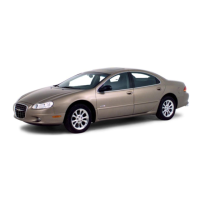
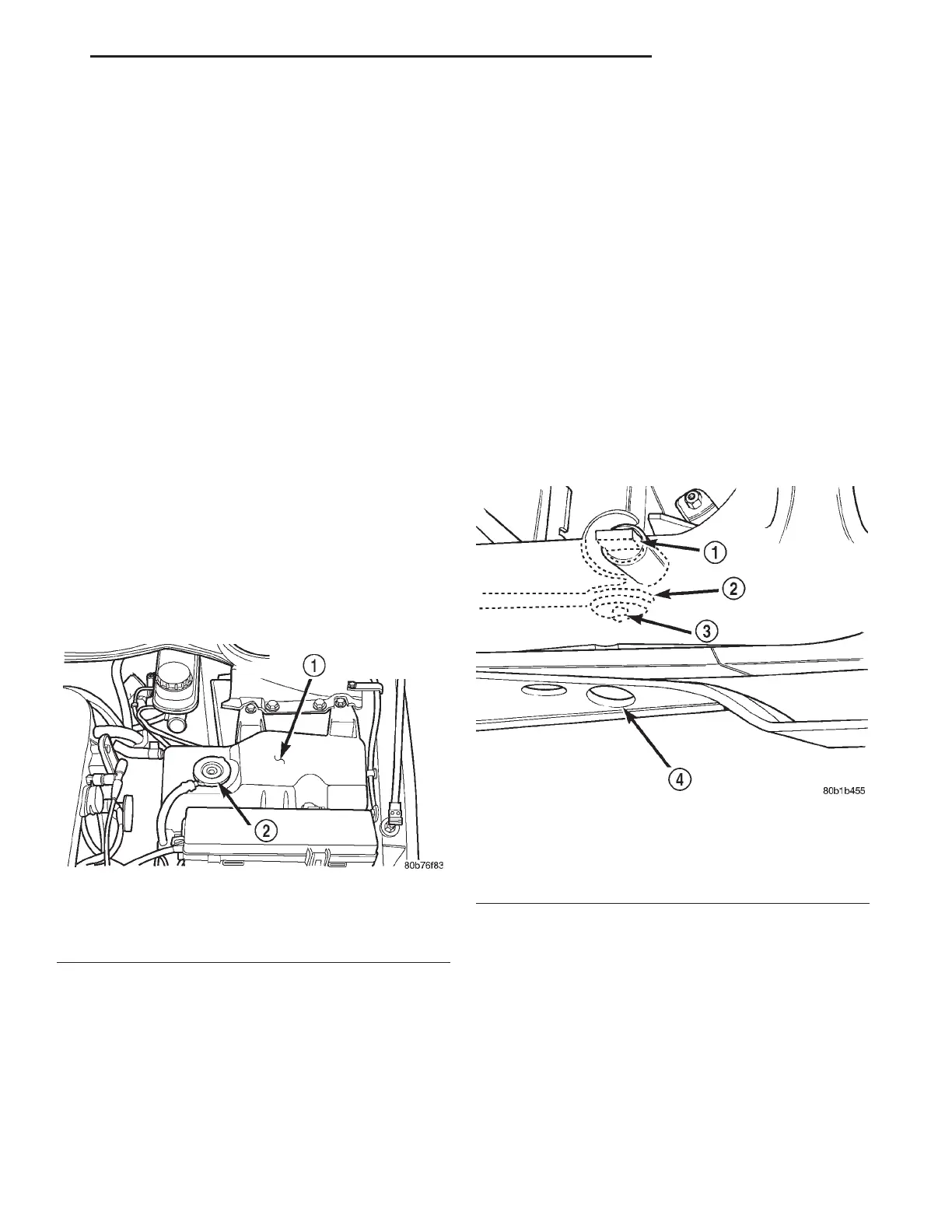